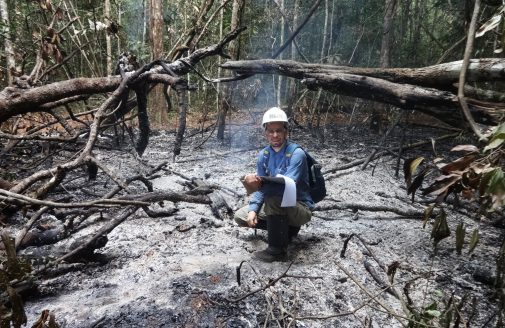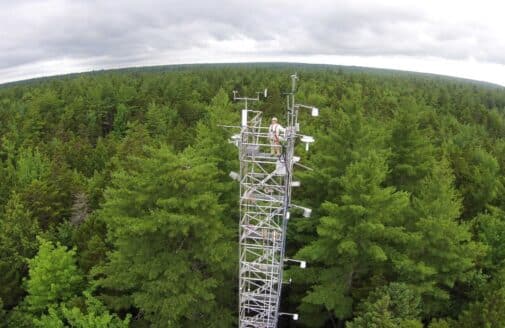New global study identifies opportunities for increasing carbon storage on land to mitigate climate change
A first-of-its-kind dataset offers a framework for climate-smart restoration and land management

Giant tropical kapok tree.
photo by Benjamin Blonder (University of Arizona) (CC BY 2.0)
A recent study, published in Proceedings of the National Academy of Sciences (PNAS), has quantified the unrealized potential of land-based carbon storage. A series of maps shows that both plants and soils have the potential to store 287 billion metric tons more across the globe—more than the current annual emissions of the European Union.
“From forests to soils, terrestrial ecosystems store enormous amounts of carbon globally, and are capable of storing even more,” said Dr. Wayne Walker, Carbon Program Director at Woodwell Climate Research Center and study lead author. “But realizing the untapped potential of land to aid in addressing the climate crisis means understanding how much storage space is available, where in the world that space is located, and what actions can be taken in those places to take advantage of the opportunity they offer as rapidly as possible. This study provides the data and conceptual framework for doing that.”
These findings reveal the significant potential for expanding land-based carbon capture globally through protection, restoration, and improved management of forests and other woody systems. Improved management of existing forests alone may offer more than 75% of the untapped potential, with the vast majority (71%) of it concentrated in tropical ecosystems.
“Forest stewardship represents the greatest opportunity for realizing carbon removal and storage in the near term, and the urgency of the climate crisis demands that we prioritize these efforts,” said Peter Ellis, Director of Natural Climate Solutions Science at The Nature Conservancy and study co-author. “Our research shows that after safeguarding lands required for food production and human habitation, improved management of forests and other woody systems—particularly degraded forests across the global tropics—offers tremendous climate mitigation potential.”
The study is timely, coming on the heels of the Intergovernmental Panel on Climate Change (IPCC)’s Working Group III’s latest report, which focuses on the urgent need to reduce carbon emissions in order to limit future warming, and highlights the significant mitigation potential of natural and managed ecosystems given the opportunity they offer to remove additional carbon from the atmosphere. While study results point to the significant opportunity that land offers as a natural climate solution based on what we know now, this work cannot stop there. Future research should build off these findings to support development of policies that take full advantage of the available land-based carbon sink.
“We anticipate these findings will prove valuable for many countries, since natural climate solutions figure heavily in delivering Paris Agreement commitments in most countries. However, these results must be combined with a range of other information to prioritize and effectively implement natural climate solutions.” said Bronson Griscom, Senior Director of Natural Climate Solutions at Conservation International.









